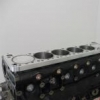Nytsky's Engine Build
Announcements
-
Similar Content
-
Latest Posts
-
Sorry I think that must be another language thing, globe = light bulb
-
Man, you guys are like an all knowing encyclopedia.. how do you guys know how to fix everything?? but thanks. i will try to trace this wiring today. What is this globe thing you are referring too? Globe Power Supply? Are you referring to the light bulb?
-
Vinyl paint always ends up coming off interior trim and looking like arse. For the a pillar trims.....just try cleaning them with fabric shampoo? Maybe ditto for the headliner.
-
Hi everyone, I'm generally new to DIY projects, and I've browsed this forum and watched a lot of youtube videos but still have a few questions Firstly, how does spray painting interior hold up? in particular like vinyl parts, my current mode of thinking is to use methyl spirits to take off original paint, clean/prep well, light coats, no primer or clear coat Secondly, what is recommended for the headliner and, for example (my car is a r34), the A-pillars which are some kind of other fabric material, do you think I would be successful at retrimming these? or would it be better to go down the blacking out via Dupli-Color Vinyl & Fabric Paint Any other advice / tips / tricks for refreshing/modernising these interiors? Thanks
-
As title says Pm a photo with what u have Type m style would be good As Hidding a thick front mount
-






Recommended Posts
Create an account or sign in to comment
You need to be a member in order to leave a comment
Create an account
Sign up for a new account in our community. It's easy!
Register a new accountSign in
Already have an account? Sign in here.
Sign In Now